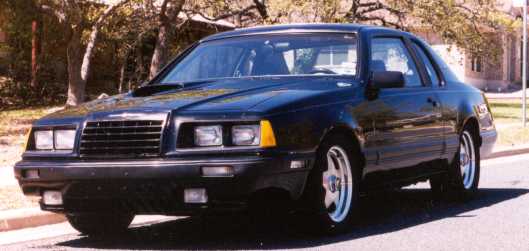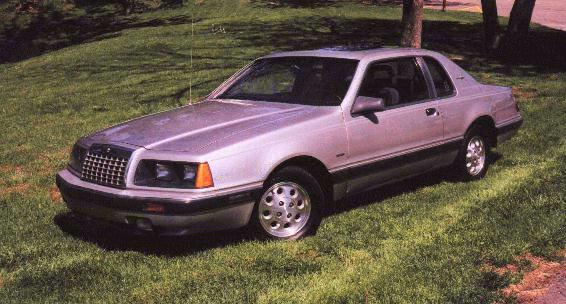1983 thru 1986 Thunderbird
The following is an excerpt from a manual called
1983 Thunderbird Marketing Manual
This was put out by Ford Motor Company to teach the sales personell how to market the new 1983 Thunderbird.
Automobile nameplates that have survived over the decades have at least two attributes in common. First, they have an element of distinctiveness to them, a particular appeal that distinguishes them from the competition. And second, they stay current with the times and fill the transportation needs of the automotive public as those needs evolve. Without these attributes, no vehicle could survive long.
Among the enduring nameplates are a few which continually have met these criteria beyond normal expectations— vehicles that are more than merely different, vehicles that are truly unique; vehicles that not only meet current needs, but also anticipate future needs. In this context, several expensive domestic and European makes may come to mind, but among specialty American cars, one stands well ahead of its competition in terms of recognition by all age groups— THUNDERBIRD.
Few vehicles, domestic or European, have the heritage of the Thunderbird. With over a quarter of a century of uniquely designed models —all rooted in the distinct sporty two-seater of the mid-fifties —the 1983 Thunderbird continues the tradition of a truly unique vehicle that makes a distinctive statement about its owner.
The advertising theme for the 1983 Thunderbird captures both the excitement of this new offering and the distinctive appeal of the Thunderbird tradition: If we didn’t dare make it different, we wouldn’t dare call it Thunderbird." The new Thunderbird is the leader in Ford’s exciting and impressive series of new products for 1983.
Annual surveys are conducted to determine buyer motivations related to car purchases. These studies show there are several key motivators common to the industry, mid-specialty segment, and Thunderbird buyers. According to the recent National New Car Buyer Study, those common factors were:
Durability / Reliability , Well Made Car,Ease of Handling, Price or Deal
While these factors motivate almost any new car buyer to buy, there are unique factors that motivate buyers withn each segment to buy a new car.
Top motivators for Thunderbird buyers and other buyers in the mid-specialty segment over the years have been: Prestige, Exterior Styling, Interior Styling, Quietness.
These factors are called ‘discriminators—buyer reasons that mark this seg-ment as different from tne rest of the industry. For example, prestige is prob-ably not a top motivator for an Escort buyer, whereas technology or fuel economy may be.
A more complete list of the motivators unique to Thunderbird’s market segment is shown in the chart below.
Top Product-Related
Thunderbird Buyer Motivators Motivators That Exceed Industry Averages*
Prestige 1 .28
Quietness 1 .09
Interior Styling 1 .09
Power/Pick-up 1 .08
Exterior Styling 1 .07
Riding Comfort 1 .06
Safety Features 1 .02
Ease of Handling 1.02
Motivations of Thunderbird buyers are similar to those of other buyers in the mid-specialty class, although in recent years, power, pick-up, and ease of handling seem to have become more important among Thunderbird buyers than among other mid-specialty buyers.
This data was used to help design a Thunderbird for 1983 that is truly targeted at the needs and wants of the mid-specialty buyer. Thunderbird’s unique styling should place Thunderbird in a strong leadership position in its market segment.
(the above information is provided courtesy of Ford Motor Company)

Mike's Mad Moto Machine - - - 1983
It has a 5.0 out of a 93' GT, F303 cam, t-5 transmission, Hurst short throw
shifter, 8.8 posi rear end w/3.55 gears, and 1.7 rockers, and a few others.
Exhaust and so on...

Jeff's 1984 Turbo Coupe ---
With over 250,000 miles this rare bird can still be seen flying through the
Indiana countryside. Original 2.3L OHC 4cyl engine and turbo. It has a
compression ratio of 8.0 to 1. It has 5 main bearings, forged aluminum
pistons, high-temperature alloy valves, oil cooler, and tuned intake
manifold. 5-speed manual transmission. Ford used four shocks on the rear
suspension of this car to limit axle hop during hard accelleration.
Turbo birds (1983-1988) became collectibles as soon as Ford stopped making
them .
